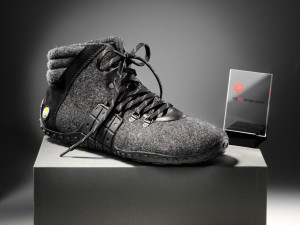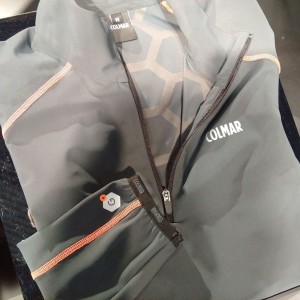 The market for smart textiles is expanding at an exponential rate, with predictions of its potential value ranging from USD$1.59bn to $4.72bn by 2020.
The market for smart textiles is expanding at an exponential rate, with predictions of its potential value ranging from USD$1.59bn to $4.72bn by 2020.
As coined in 2009, the term “smart textiles” is defined as textiles that can sense and react to environmental conditions or stimuli from mechanical, thermal, chemical, electrical or magnetic sources. In other words, smart textiles are “adaptive,” making them ideal for applications that may benefit the user in different ways, such as thermoregulation, healthier environments, and improved physical performance.
Currently, all eyes are on textiles that are integrated with electronic sensors and circuitry, enabling us to measure, monitor, track, and communicate our vital signs, performance goals, and whereabouts through other electronic devices.
But the market seems to have forgotten that there are smart textiles, both currently in use and in development, that do not rely on electronics, yet provide us with a wide range of benefits.
According to Rebeccah Pailes-Friedman, professor and founder of the Intelligent Materials Applied Research & Innovation (IMARI) Lab at Pratt Institute in Brooklyn, NY, and author of Smart Textiles: Inventing the Future of Fabrics, “Many smart fabrics have been developed through advanced chemistry to change their physical characteristics in different situations. Unlike traditional textiles, these fabrics can adapt, gather energy, protect and even transform when integrated into textile products designed to improve our lives.”
These textiles may utilize exotic polymers, auxetic materials, unique finishes, or nano-technology—in essence, what DuPont used to refer to as “Better living through chemistry”.
Keeping cool, staying warm
A wide range of thermo-regulating technologies for apparel have emerged since the development of phase-change materials in the 1990s, with the emphasis shifting to innovative polymers and nano-technologies.
Coolcore™ is a cooling technology based on a combination of polymers that deliver three distinct functions when activated by moisture: wicking, moisture circulation, and regulated evaporation. The patented technology is said to reduce the temperature of the fabric surface by as much as 30%, compared with skin temperature.
New fibers are also being developed that can convert energy into warmth, such as Hyosung Heat On™ polyester, which contains a proprietary mineral to absorb and transform solar energy into thermal energy to warm the body.
From Invista, THERMOLITE® INFRARED technology utilizes the near-infrared rays of the sun or other light sources to generate heat within its hollow-fiber THERMOLITE® PRO insulation.
Some smart technologies rely on barriers or membranes for thermoregulation. A shape-memory polymer used in Thermore® Thermal Booster smart insulation firms up when the temperature drops. “The polymer is flexible at one temperature, and closes off at a colder temperature, creating an additional thermal barrier,” explained Joe Di Gerolamo, Thermore’s US sales director.
A similar principle is utilized by TLX™ Gold dynamic building insulation. Combining breathable materials such as cellulose, recycled microfiber polyester wadding, and microporous polypropylene, the roofing insulation has a high Sd intelligence level. This means that it breathes more or less according to the amount of moisture generated by the building’s interior, eliminating the need for a vapor barrier.
Nano-materials such as graphene also hold potential for thermo-regulating applications. Colmar’s line of sportswear enhanced with Graphene Plus (G+) from Directa Plus was launched at ISPO Munich in January. “G+ that we use on our samples is applied at the fabric in the part in contact with the body in order to take advantage from the thermal conduction,” related Colmar CEO Giulio Colombo. “We verified through thermographic tests that the heat diffusion in samples treated with graphene G+ is superior to that in samples not treated.”
 Cleaner and safer
Cleaner and safer
Bioactive or self-cleaning attributes are showing up in smart textiles for both apparel and environments. Quick-Med Technologies has developed a product called Oxi Fresh™ that permanently binds hydrogen peroxide (H202), a natural antimicrobial, to the textile.
According to Quick-Med founder David Lerner, Oxi Fresh™ reduces the need to wash textiles as frequently, or at high temperatures, thus conserving water and energy. Unlike other antimicrobial finishes, Oxi Fresh™ maintains its efficacy for 75 home launderings, contains no harmful chemicals or nano-particles, and breaks down into simply water and oxygen.
“Quick-Med Technologies, Inc. has developed and commercialized Oxi Fresh™ as a new, game-changing, green, FDA/EPA-approved antimicrobial and preservative, a ‘No Wash’ product for the textile, apparel, and footwear industries,” Lerner commented.
According to Lerner, Oxi Fresh™ antimicrobial could alter the way we launder hospitality, medical, and home textiles as well.
To keep interiors fresh and clean, T47 Bioactive Wallcoverings contain a catalytic metal salt that converts unpleasant odors and environmental pollutants into natural and harmless substances, along with silver ions that inhibit the growth of microbes. Created with Trevira® CS, the wallcoverings are also flame retardant and offer good acoustic properties.
 Enhancing performance
Enhancing performance
The ongoing development of performance-enhancing smart materials for the active sport and outdoor markets is particularly exciting, with innovation labs at big brands such as Under Armour (UA) leading the way. UA is the first active apparel brand to use auxetic materials, which when stretched, flex and become thicker perpendicular to the force applied. Based on a series of hinge-like structures, auxetic materials also absorb impact and resist fractures.
With previous forays into auxetic-inspired design in its ClutchFit compression gear and Volt sports shoe, UA has just released its 3D-printed Architech hybrid trainer. An innovative 3D-printed midsole is combined with a 3D-printed ClutchFit auxetic upper that flexes and moves with the foot. Two years in development, the result is a training shoe that adapts to support athletes in a wide variety of workouts.
Open-cell polyurethane foam is another development in smart textiles for impact protection. PORON® XRD® extreme impact protection absorbs 90% of the energy generated by a high speed impact, yet is thin, light, flexible, and breathable. Like a shape memory polymer, the material is soft when at rest above the glass transition temperature of the urethane modules, but freezes on impact to form a protective shell.
“What we are trying to make happen is a revolution in impact protection that you can wear without noticing that you are wearing it,” stated Dave Sherman, innovation leader for the PORON® Impact Institute at Rogers Corporation. “Most people assume that a hard shell with foam inside works pretty well. But hard shell can shift or hinder movement, taking away from the enjoyment of the sport.”
Sherman noted that PORON® impact protection foams are also in demand for insoles for footwear. “People are looking to reduce stress on their bodies,” he said.
Likewise, the desire for health and well-being is driving a textile innovation called VOXX Human Performance Technology™ (HPT). Jay Dhaliwal, president and CEO of VOXX Sports, has developed “smart” patterns that can be knit or woven into apparel textiles. When positioned to activate key neuro-sensors on the skin, the patterns stimulate the central nervous system to improve the wearer’s gait, posture, mobility, and aerobic performance.
The drug-free, non-e, smart technology is applicable to all types of apparel textiles; and the copyrighted patterns are currently being put into socks, insoles, compression wear, and cycling gear for testing. “When people talk about performance apparel, they talk about the material,” said Dhaliwal. “Voxx HPT™ improves the performance of the wearer, using virtually any type of material.”
VOXX is currently partnering with yarn supplier Richter International to develop a line of socks, and to market the technology to hosiery and apparel brands.
There’s much more to come in the realm of non-electronic smart textiles: self-healing polymers, super-absorbent materials, photochromic and thermochromic colorants, just to name a few.
As Business of Fashion founder Imran Amed recently pointed out in The WIRED World in 2016, “As technology continues to advance in areas such as material science and nanotech, the real opportunity may be in so-called smart fabrics.”
 TEXTILES.ORG
TEXTILES.ORG


